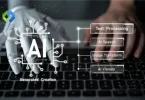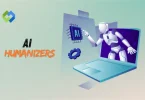Security is another significant benefit. The AI code checker identifies risky functions, insecure configurations, and known exploit patterns. They assist with compliance regulations, which teams use to meet industry standards and avoid costly vulnerabilities. By inspecting code, companies can draw significant conclusions, as the technology adapts to various conditions in the development environment. Code inspection helps comply with regulatory requirements. This enables companies to achieve higher standards and optimize the development process. The primary benefits are avoiding vulnerabilities and maintaining stability, enabling companies to achieve success by minimizing errors and streamlining routine tasks.
Table of Contents
Table of Contents
AI Code Tools – Comprehensive Development Suite
AI code tools support developers throughout the entire lifecycle, performing tasks such as code completion, refactoring, translation, documentation, and testing. They combine multiple AI models to enhance efficiency, with the goal of enabling teams to build high-quality software faster and more accurately. They integrate with popular environments like Visual Studio Code, JetBrains tools, and cloud pipelines.
Common capabilities include:
● AI Completion: The tool predicts the next lines based on context. It reduces typing time and minimizes syntax errors, also helping developers learn best practices.
● Automatic Refactoring: AI detects redundant logic, duplicated code blocks, and long functions. It recommends simplified structures and safer abstractions.
● Language Translation: Developers can convert legacy code from one language to another. This speeds up migrations and reduces the need for manual rewriting.
● Security Scanning: AI monitors known vulnerabilities, unsafe dependencies, and access risks to ensure optimal security. Teams receive guidance before deployment.
● Documentation Generation: AI creates comments and summaries based on code behavior. This aids team communication.
These tools are valuable for both small startups and enterprise-level teams, as they adapt to different project scales and provide consistent feedback. This allows developers to avoid bottlenecks and maintain code quality across multiple releases. Utilizing AI code tools reduces technical debt and enhances long-term maintenance, leading to cleaner code, fewer bugs, and faster development. Teams deliver stable software more consistently, and AI tools create a safer, more predictable workflow. The use of artificial intelligence today helps improve any organizational structure. Essential tools and code analysis capabilities enhance productivity. This type of checking helps assess all risks and minimize manual burden.
AI Code Review Tools – What To Look For
AI code review tools automate pull request evaluations, helping developers catch issues early and reduce manual review time. Choosing the right tool depends on the team’s needs and project complexity. The evaluation criteria ensure the tool aligns with performance, security, and maintainability requirements.
Key features to consider:
● Language Coverage: The tool must support the programming languages used by the team. Broad coverage reduces the need for multiple tools.
● Security Checks: Strong vulnerability scanning helps prevent threats. Tools must recognize OWASP vulnerabilities, injection risks, and misuse of unsafe libraries.
● Performance Optimization: AI should recommend faster algorithms or better resource usage. It detects unnecessary loops and inefficient data structures.
● Coding Standard Enforcement: Tools ensure consistent formatting and naming conventions. This results in unified team output.
● Integration Capability: It should work seamlessly with GitHub, GitLab, Bitbucket, and CI/CD pipelines to save time.
AI code review tools improve collaboration. The tools highlight priority errors and provide clear explanations, enabling developers to understand how to resolve issues. This improves skills for junior developers. Teams benefit from faster merges, fewer regressions, and increased confidence in code changes. Overall, the right AI code review can significantly boost code quality while reducing manual workload.
AI Code Analysis – Advanced Capabilities
AI code analysis focuses on discovering deeper structural problems in software. While traditional analyzers rely on static rules, AI uses dynamic models that learn from thousands of real-world repositories. This results in more accurate detection of bugs and design flaws. It also identifies scalability issues that may not break the code immediately but could fail later under heavy load.
AI code analysis enables teams to understand how different modules interact, identifying dependency cycles and coupling issues. These structural insights lead to better architecture. The tool also highlights unused modules and dead code, thereby reducing the build size.
Security is a major focus; the AI identifies patterns associated with dangerous behaviors, checking API usage, authentication flaws, and unsafe network calls. It flags outdated packages and suggests necessary upgrades. Developers gain visibility into risk zones, and performance suggestions boost efficiency. The AI can detect slow database queries, memory leaks, and thread lock situations. These insights improve the user experience in production environments. AI code analysis enhances maintainability. It provides suggestions on readability and function size, helping developers write more concise, understandable code. Over time, codebases become healthier. By integrating code analysis early, teams avoid costly rework, as the tool provides warnings before issues can escalate. It supports continuous improvement and faster releases.
AI-Based Code Review – Implementation Workflow
Implementing AI-based review requires a structured approach that ensures each step adds value. Teams begin by selecting a platform that matches their project scale and language requirements. For companies focused on development, Noca AI offers unique opportunities. Quality code review, supported by the necessary tools, ensures success. Companies that integrate code review and testing tools achieve greater success. AI-based code review is essential for many companies, as it is vital for minimizing errors and achieving success.
Installation is usually straightforward, requiring minimal configuration. Typical workflow steps include:
- Repository Connection: The tool connects to the version control system and automatically begins monitoring new branches and pull requests. This continuous monitoring is essential for sustained success.
- Rule Selection: Teams define standards and coding guidelines. AI models follow these rules and provide suggestions. Defining rules helps align the model with team standards. Teams conduct work based on these established rules and conditions.
- Automated Scan: The tool analyzes changed lines and the surrounding context. It identifies errors, vulnerabilities, and anti-patterns. Identifying errors and vulnerabilities is key to achieving continuous resolution, enabling employees to take the right actions based on the tool’s decisions and address the problems.
- Developer Feedback: Suggestions appear directly in the pull request. Developers revise code instantly, focusing on fixing specific errors. Developers use these tools to identify potential problems.
- Quality Scoring: The tool assigns a grade based on maintainability and security metrics. This evaluation helps maintain a safe and harmonious working environment. Quality evaluation is a crucial step following the completion of any work process.
AI-based code review helps distribute workloads equally. Senior engineers no longer handle every request, and developers gain continuous, delay-free feedback. The workflow reduces bottlenecks and shortens cycle times, ensuring better collaboration. Team efficiency increases. In the long term, the reviewed code becomes more consistent. AI-based code review provides sustainable quality improvements.
AI Code Tester – Automated Testing Solutions
AI code testers automate unit, integration, and regression tests. They generate test cases based on behavior patterns, reducing the time needed to write manual tests. The AI code tester continuously executes tests, adapting to code changes over time. Common capabilities include test suggestion, edge-case generation, and failure pattern recognition. AI detects gaps in coverage and recommends new test cases. It also prioritizes high-risk areas. Developers receive insights regarding unstable functions and frequently failing modules. Tools help improve workflow and increase confidence in each build, reflecting a holistic approach from the beginning of development. Testers play a crucial role in enhancing software performance. Using effective tools helps quickly reproduce test scenarios and ensure success.
AI code testers improve coverage percentages. They simulate unexpected input conditions and concurrency scenarios. This strengthens software resilience. The tools also speed up bug detection, as developers receive immediate alerts when behavior changes. Productivity increases significantly. Teams spend less time writing repetitive tests and more time focusing on creating features. The AI code tester integrates with CI/CD pipelines and runs automatically, preventing regressions during deployment cycles. The result is stable, reliable software, and release cycles accelerate. AI testing tools reduce human effort and increase confidence in every build.














